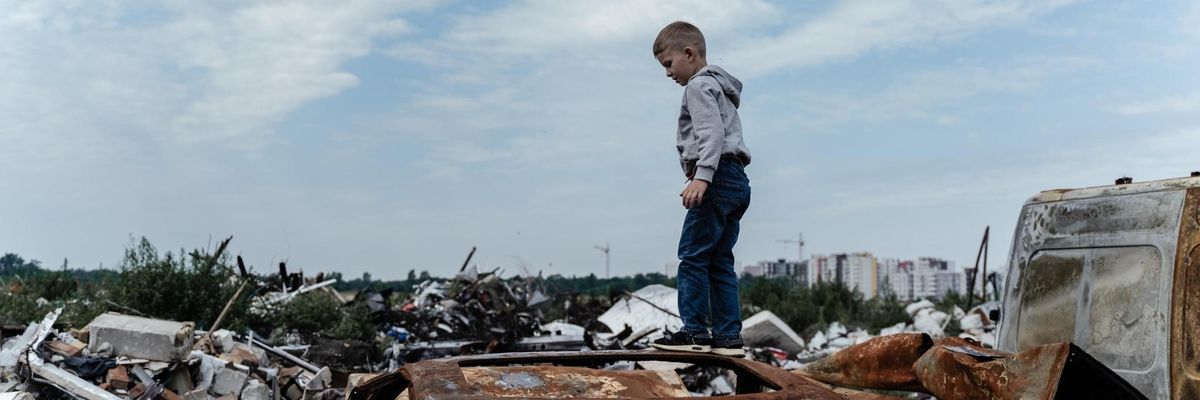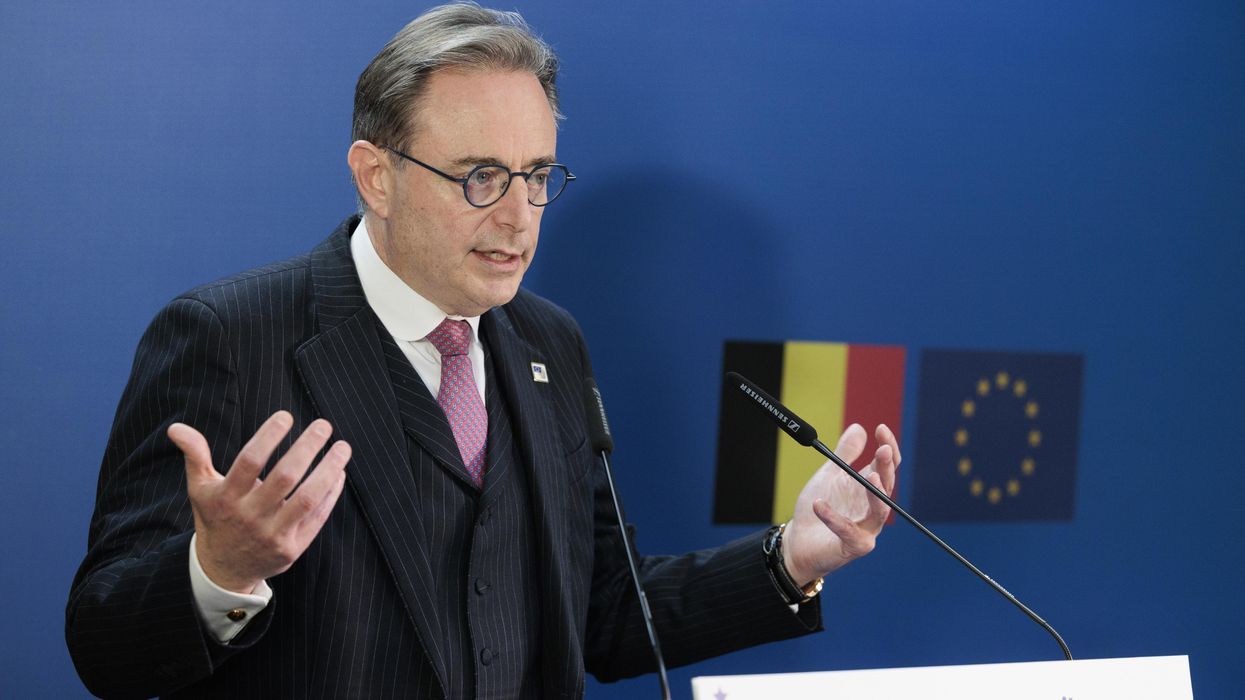The environment and security are inextricably linked – each affecting and affected by the other.
Notwithstanding the long-standing debate over whether there is a causal relationship between the environment and security, environmental conditions nonetheless may be seen to have a demonstrable impact on human well-being and, by association, the viability and stability of governments.
The environmental damage created by the war in Ukraine — and more to the point, how the United States and others respond to that damage — could therefore be considered a key determinant of Ukraine’s future as a sovereign state capable of fulfilling its responsibilities at home and abroad.
The environmental destruction Ukraine has suffered to date has been profound. Best available estimates are that the country has suffered $51-$54 billion in environmental damage, and that it will cost more than $400 billion (in President Zelensky’s estimation, up to $1 trillion) for recovery, repair, and reconstruction.
Among the most pronounced examples of documented environmental devastation have been the following:
— Some 2,300 instances of environmental damage caused by fighting.
— More than 6 million Ukrainians with limited or no access to clean water.
— 600 animal species and 880 plant species at risk of extinction.
— 3 million hectares of forest destroyed.
— 2.9 million hectares of protected areas at risk of destruction.
— 5 million hectares of agricultural land that can’t be sowed because of landmines.
— 687,000 tons of petrochemicals burned due to shelling.
— 1,600 tons of pollutants leaked into bodies of water.
Independent of the war, Ukraine has faced major environmental challenges over time, an enduring legacy of its Soviet past. The country ranks 52 out of 180 countries in the annual Yale-Columbia Environmental Performance Index, with low to middling performance in the areas of biodiversity, ecosystem services, pesticide use, air quality, wastewater treatment, sanitation, and waste management.
In annual assessments of Ukraine’s performance in achieving the 17 Sustainable Development Goals agreed to by the member states of the United Nations in 2015, Ukraine ranks 37 out of 163 countries, with major challenges in measures associated with Life on Land and Life Below Water and significant challenges in Clean Water and Sanitation.
That the country ranks as high as it does in such environmental assessments is perhaps a reflection of its seriousness about environmental matters in the first place. In tangible terms, this is perhaps best reflected in the fact that Ukraine is party to virtually all major international treaties in the areas of air pollution, biodiversity, climate change, desertification, endangered species, environmental modification, hazardous wastes, marine dumping, nuclear test bans, ozone layer protection, ship pollution, and wetlands.
For example, Ukraine is party to the Convention on Biological Diversity; the U.S. is not. Ukraine is party to the Basel Convention on Transboundary Movements of Hazardous Wastes; the U.S. is not. Ukraine is party to the UN Convention on the Law of the Sea; the U.S. is not. For President Zelensky to refer to the situation in his country as “ecocide,” then, is not just inflated rhetoric; it is recognition, largely lost on others, of the environment’s fundamental importance to national, regional, and global well-being and stability.
Crass and opportunistic though it may sound, environmental degradation like that being visited upon Ukraine represents lucrative markets for environmental business. The United States is in a seemingly unique position in this regard. The U.S. environmental industry represents total revenues of over $400 billion, is generated by some 30,000 private-sector companies, and more than 80,000 public-sector entities, employing 1.7 million Americans.
The global environmental market is about $900 billion. In Engineering News-Record’s annual rankings of the top 200 environmental firms, 35 of the top 50 and 6 of the top 10 are U.S. firms (AECOM, Jacobs, Clean Harbors, Tetra Tech, Bechtel, and Fluor), nearly all with global presence.
Secretary of Commerce Gina Raimondo has stated: “American businesses have a tremendous opportunity to play an outsized role to help rebuild Ukraine.” Even in the pre-war period, the International Trade Administration ranked Ukraine 45 out of the top 50 markets for environmental technologies in 2017. Secretary Raimondo has gone on to say that “This has to be a public-private partnership if we’re going to get this done.”
This brings us to two questions that command our attention. The first is why environmental conditions in Ukraine warrant a strong, effective response. The answer to that is perhaps best captured in the relatively recent UN General Assembly resolution that reaffirms what many have long maintained: that a clean, healthy, sustainable environment is a fundamental human right. Because, as America’s founders believed, the overriding purpose of government is to secure and preserve such natural rights, the continued legitimacy and viability of the state – Ukraine or any other – lies in its ability to fulfill that purpose. It is in everyone’s interest to ensure that Ukraine succeeds in this regard.
The second question at hand is how to go about restoring Ukraine’s environment to a state of normalcy and vibrancy. That answer is, in some sense, aptly captured in the mid-2022 PERAC (Protection of the Environment in Relation to Armed Conflicts) principles promulgated by the UN International Law Commission. Key among these non-binding, consensus-based principles are several that build on the precept that “effective protection of the environment in relation to armed conflicts requires that measures are taken by States, international organizations and other relevant actors to prevent, mitigate and remediate harm to the environment before, during and after an armed conflict.”
This imperative for collective action to counteract and overcome the environmental devastation in Ukraine calls not only for a more fully integrated public-private posture that capitalizes on the inestimable strategic power of the private sector, specifically the environmental industry, but also for a robust array of federal interagency, intergovernmental, and civil society partnerships involving such centrally important stakeholders as USAID, the International Development Finance Corporation, the Export-Import Bank, the International Monetary Fund and the International Finance Corporation, the U.S. Chamber of Commerce, the World Business Council for Sustainable Development, the United Nations Foundation, Ceres, the Gates Foundation, and many others.
Already, the U.S. Chamber of Commerce, acting independently of government, has initiated movement in this direction with its Ukraine Business Initiative.
Acting collectively in such “whole-of-humanity” fashion to mobilize massive resources for restorative and transformative environmental purposes could well be the moral and strategic equivalent of the post-World War II Marshall Plan – which President Truman noted in his memoirs “will go down in history as one of America’s greatest contributions to the peace of the world.”
But, because the original Marshall Plan focused on economic (not environmental) recovery and took place in the aftermath of (not during) an already-concluded war, let us not mislead ourselves by the lure of either inflated or diminished expectations. The purpose of this “green Marshall Plan” would not in itself be capable of ending the war — nor would it be held indefinitely in abeyance until the conclusion of fighting via other channels. Its purpose is resiliency — restoring the quality of life and human well-being in Ukraine for the purpose of enhancing social cohesion and thereby demonstrating the enduring national resolve that could, in conjunction with other political forces, indirectly produce war termination.
If this seems illogical and diametrically opposed to the natural order of things, perhaps that is because we haven’t been willing yet to give it a try.
















